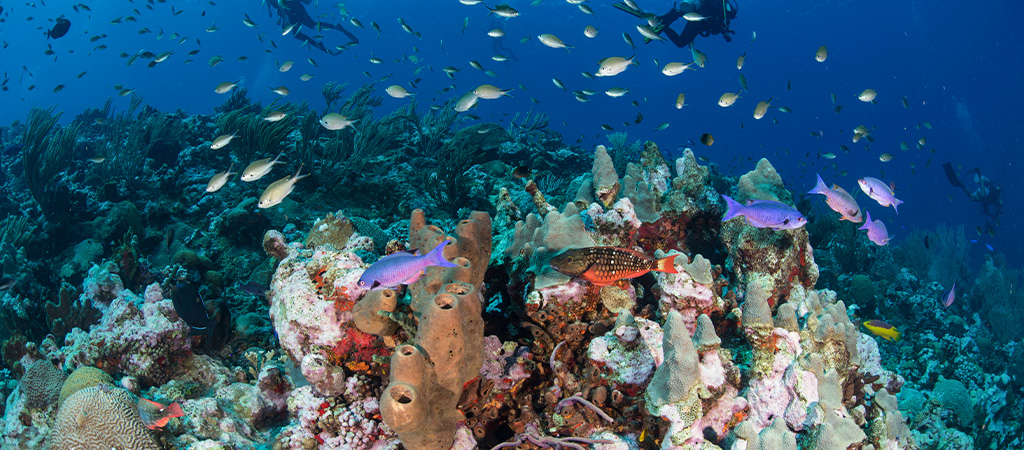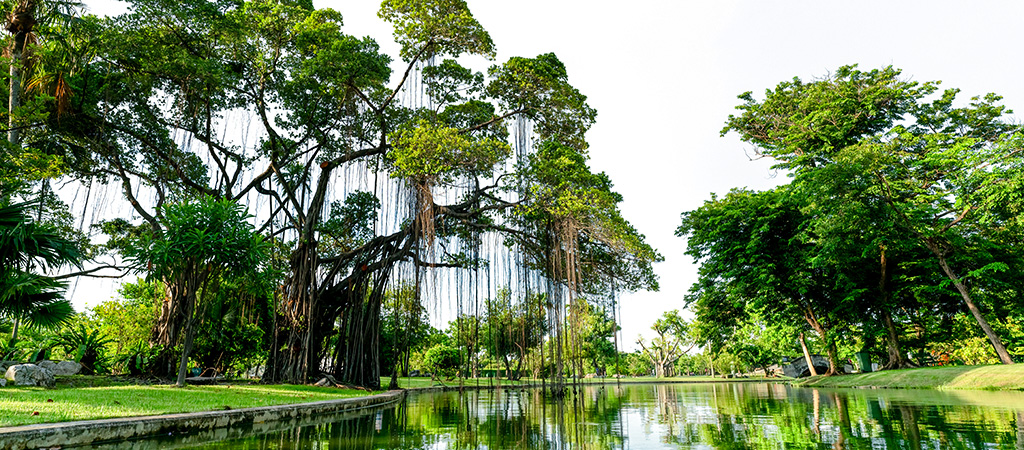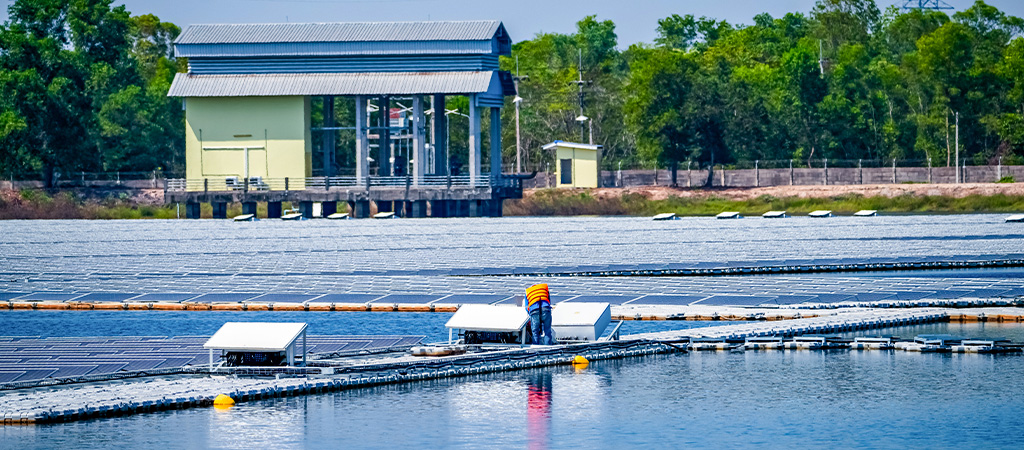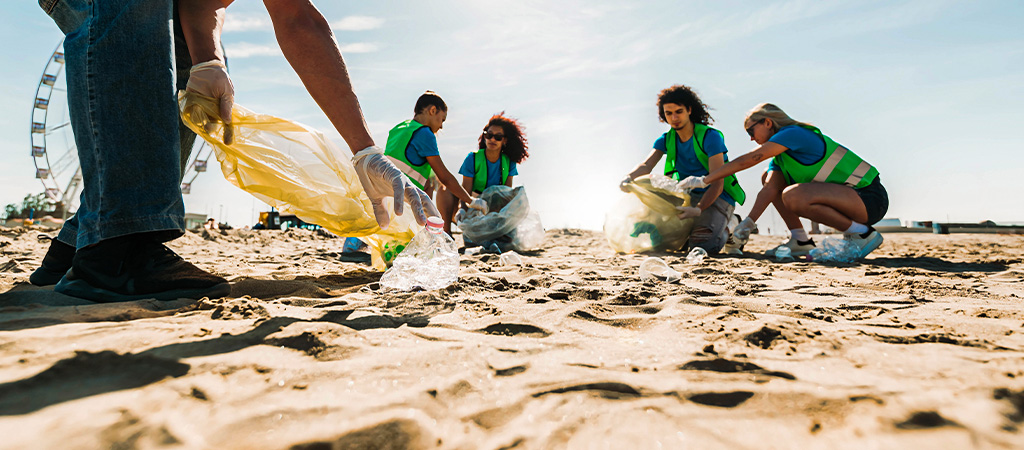Ever wondered what makes Florida’s natural landscape so diverse and captivating? Looking to explore beyond theme parks and sandal shops on your next Sunshine State vacation? Here’s the good news — Florida ecosystems are some of the most diverse and unique in the entire United States and much of it can be seen completely free! From the Florida Panhandle to the Florida Keys, there’s something for everyone.
Craving a day on the beach? The sugar-white sands of the Gulf of Mexico are calling! Want to see the mysterious depths of the Everglades? Florida has something to show for nature’s ingenuity and resilience. Intrigued by a vacation off the beaten path? Imagine kayaking through winding mangrove tunnels, spotting a gentle manatee gliding beneath your boat. Or picture yourself hiking through ancient hardwood forests, the canopy alive with the songs of biodiversity found nowhere else in the country.
These aren’t just daydreams — they’re real experiences waiting for you on your next beach getaway in Florida!
PSA: Florida’s natural wonders face their own challenges. Climate change, habitat loss, and invasive species threaten these delicate ecosystems. As we look at the incredible diversity of Florida ecosystems, we’ll also discuss the importance of preserving these natural resources for future generations — and how YOU can help when visiting the area.
The Diverse Regions of Florida

Northwest Florida — Emerald Coast & the Florida Panhandle
Offering a unique blend of ecosystems that many visitors overlook, Northwest Florida — home to the alluring Florida Panhandle — feature some of the state’s most pristine beaches, with sugar-white sands stretching along the emerald waters of the Gulf of Mexico.
Venture inland, and you’ll discover a world of pine flatwoods and steephead ravines. The Apalachicola National Forest, one of the largest national forests in Florida, showcases the region’s biodiversity with its mix of flatwoods, sandhills, and wetlands.
Pine Flatwoods
The pine flatwoods in Florida, characterized by open canopies of longleaf and slash pines with a diverse understory, once covered vast swaths of the Southeast. Today, these forests provide crucial habitat for species like the endangered red-cockaded woodpecker and the gopher tortoise. For an up-close look at this beautiful Florida habitat, we recommend exploring Grayton Beach State Park.
Rarities on the Coast
Steephead ravines, unique geological features found primarily in the panhandle, harbor rare and endemic plant species in their sheltered microclimates. Nearly 5,000 years old, 15 coastal dune lakes — shallow bodies of water within 2 miles of the Emerald Coast — can be found along 30A beaches. This rare phenomenon only occurs in 3 other countries around the world!
Northwest Florida has truly diverse environments, ideal for those looking to hike, spot wildlife, lounge on the beach, swim, enjoy boating activities, and explore!
Central Florida — Ocala National Forest & Green Swamp
As we move into Central Florida, the landscape shifts. This region is characterized by its many lakes, remnants of ancient sinkholes, and the unique scrub habitat in places like the Ocala National Forest.
Sand Pine Scrub
These sandy, dry areas might not seem hospitable, but they’re home to many endangered species, including the Florida scrub jay, found nowhere else in the world. The scrub ecosystem, with its stunted oaks and open patches of white sand, is one of Florida’s most imperiled habitats, making conservation efforts and deep-dive ecology here particularly crucial.
Green Swamp
Central Florida is also home to the Green Swamp Preserve, a vast area of freshwater wetlands that serves as the headwaters for several of Florida’s major rivers. This mosaic of cypress swamps, marshes, and hardwood forests plays a vital role in the state’s water supply and flood control.
South Florida — Home to the Everglades
Arguably the most iconic of Florida ecosystems — the Everglades — is found in Southern Florida.
This “River of Grass” is not just a swamp, as some might believe, but a complex system of habitats, including sawgrass marshes, tropical hardwood hammocks, and mangrove swamps. The Everglades is a testament to the importance of freshwater wetlands in Florida’s ecological balance.
The sawgrass prairies of the Everglades are home to a diverse array of wildlife, including the endangered Florida panther and the American crocodile. Along the coast, mangrove forests connect land and sea, protecting shorelines from erosion and serving as nurseries for many marine species.
Coastal & Marine Ecosystems

Florida’s 1,200 miles of coastline support a variety of coastal ecosystems. You’ll find expansive beaches and dune systems on the Atlantic side, home to nesting sea turtles and shorebirds. In contrast, the Gulf of Mexico coastline often features calmer waters and extensive salt marshes, which play a crucial role in nutrient cycling and provide a habitat for numerous fish and bird species.
Endangered Reefs
Coral reefs create underwater cities of life in South Florida and the Keys. The Florida Reef Tract — the world’s 3rd-largest coral barrier reef system — stretches from the Dry Tortugas to Stuart. These reefs not only provide crucial habitat for countless marine species but also protect the coastline from storm surges.
However, like coral reefs worldwide, Florida’s reefs face significant threats from climate change, including ocean acidification and rising sea temperatures.
Florida Bay
Nestled between the southern tip of mainland Florida and the Keys, Florida Bay is a shallow estuary that serves as a nursery for many fish species. Its seagrass beds are vital feeding grounds for manatees and sea turtles. The bay’s health is intimately connected to the Everglades ecosystem, with freshwater flows from the ‘Glades influencing salinity levels and overall ecological balance.
Inland Waterways & Wetlands

Florida’s interior is laced with beautiful rivers, springs, and wetlands — home to a variety of flora and fauna.
First-Magnitute Springs
The Sunshine State boasts the highest concentration of first-magnitude springs globally, each pumping millions of gallons of crystal-clear water daily. These springs, along with Florida’s many rivers, are not just beautiful — they’re also crucial habitats for a wide range of animal species, including the threatened Florida manatee, which relies on the warm spring waters for winter refuge.
Freshwater Wetlands
The state’s freshwater wetlands go beyond the Everglades. From Eden Gardens State Park in Northwest Florida to the Green Swamp in Central Florida to the Big Cypress National Preserve in South Florida, these areas act as nature’s sponges, filtering water and providing flood control. They’re also biodiversity hotspots, home to species like the alligator, numerous wading birds, and a myriad of plant species.
The Kissimmee River, which flows into Lake Okeechobee and ultimately feeds the Everglades, has been the focus of one of the world’s largest river restoration projects. This effort aims to restore the river’s natural meandering course and floodplain, enhancing water quality and wildlife habitat.
The Challenges Facing Florida’s Ecosystems

Despite their resilience, the ecosystems of Florida face numerous threats, many directly or indirectly linked to human activity.
Climate Change
Climate change poses perhaps the most pervasive threat. Rising temperatures are altering habitats across the state, from the Panhandle pine flatwoods to the Keys coral reefs.
Sea-level rise is particularly concerning for coastal areas. It threatens to inundate low-lying habitats and push saltwater into freshwater systems. In the Everglades, this could lead to the collapse of freshwater marshes and the loss of critical wildlife habitat.
Habitat Loss
Habitat loss due to urban development and agriculture continues to be a pressing issue. Florida’s ecosystems have been dramatically altered over the past century, with many habitats reduced to a fraction of their original extent.
The rapid population growth in Florida has led to converting natural areas into residential and commercial developments, fragmenting habitats and disrupting wildlife corridors.
Invasive Species
Invasive species pose another significant challenge. Florida’s warm climate and numerous ports of entry make it particularly vulnerable to the introduction of non-native species, from Perdido Key on the Florida Panhandle all the way to Miami along the Southern tip.
The Burmese python in the Everglades is perhaps the most infamous example, but other invasives like Brazilian pepper and water hyacinth are causing widespread ecological disruption. These invasive species often outcompete native flora and fauna, altering ecosystem dynamics and threatening biodiversity.
Water Management & Pollution
Water management is another critical issue for the ecosystems of Florida. The draining of wetlands for agriculture and development has significantly altered water flow patterns across the state.
In South Florida, the complex system of canals and levees that controls water flow into the Everglades has disrupted the natural “sheet flow” of water that once characterized this unique ecosystem.
Pollution, particularly nutrient pollution from agricultural runoff and urban areas, continues to impact Florida’s waterways. This has led to problems like algal blooms in freshwater systems and contributed to the decline of seagrass beds in coastal areas, affecting species like the beloved manatee.
Conservation Efforts & Future Outlook
The challenges are there, but so are the opportunities! The preservation of Florida’s ecosystems is not just about protecting natural resources — it’s about safeguarding the state’s economic future and quality of life.
Everglades Restoration
The Comprehensive Everglades Restoration Plan (CERP) is one of the most ambitious ecosystem restoration projects in the world. This multi-decade, multibillion-dollar effort aims to restore, preserve, and protect the South Florida ecosystem while providing for other water-related needs of the region. The plan includes projects to improve water quality, quantity, timing, and distribution throughout the greater Everglades ecosystem.
Marine Conservation
In marine conservation, initiatives like the Florida Keys National Marine Sanctuary are working to protect and restore coral reefs. These efforts include coral propagation and outplanting programs and measures to reduce stressors like water pollution and boat damage.
Invasive Species Mitigation
Efforts to combat invasive species are ongoing. For example, the Python Elimination Program in the Everglades employs trained hunters to remove Burmese pythons from the ecosystem. Meanwhile, biological control methods are being researched and implemented for invasive plant species.
Land Preservation
Land acquisition programs, such as Florida Forever, aim to preserve critical natural areas and wildlife corridors. These programs are crucial for maintaining habitat connectivity and protecting biodiversity in the face of continued development pressure. And projects like the Kissimmee River Restoration are working to undo past damage and return ecosystems to a more natural state.
How YOU Can Help Protect Florida’s Ecosystems

From the tourism industry that relies on beautiful beaches and diverse wildlife to the ecosystem services provided by wetlands and forests, Florida’s natural systems are a key part of the state’s economy and well-being. If you’re planning a trip to Florida, consider how YOU can support and protect the state’s ecosystems.
At Florida CFY, we’re committed to helping you explore and protect Florida’s natural wonders. We believe in responsible tourism practices that benefit both visitors and the environment. From eco-friendly transportation options to sustainable tour activities, make the most of your trip while also preserving the beauty of Florida’s diverse landscapes.
Tips for an Eco-Friendly Beach Getaway
- Never leave anything beind when exploring beaches, state parks, or nature preserves.
- Keep your distance from local wildlife — and never feed wild animals.
- Leave marine creatures and shells alone to avoid disrupting the natural habitat.
- Bring leftovers from local restaurants back to your Florida beach rental, saving food waste and cash!
- Plan your trip with driving distance in mind to help eliminate unnecessary travel time and reduce your carbon footprint.
- Be mindful of how much water and energy you use at any accommodation.
- Use reusable bottles, coolers, and shopping bags while traveling the area.
- Pick up trash — with safety practices — to help keep our environment clean.
- Consider reef-friendly sunscreen, especially when entering the ocean.
- Protect endangered sea turtles in nesting season by flattening sandcastles and filling in moats/holes — so mothers and newborns aren’t trapped.
- Obey all beach and park signs, adhering to wildlife safety precautions and staying off dunes and protected lands.
Ready to explore Florida ecosystems? Plan your next trip with us and experience the beauty of Florida in a responsible and sustainable way. Together, let’s make a positive impact on our planet and support eco-friendly travel practices. Choose Florida CFY for an unforgettable journey that makes a difference!







